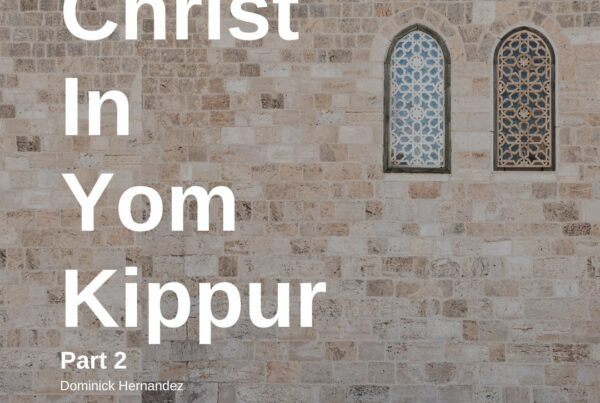
Dominick Hernández will be a workshop speaker at the 2017 CCCM Pastors & Leaders Conference on June 26-29. For more information, please visit the website.
Over the past few days, news broke that there was a new cave found in the vicinity of Qumran. Twitter and Facebook nearly crashed as a result of the abundance of postings (hyperbole) concerning the possible twelfth Dead Sea Scrolls’ cave by the small percentage of world’s population that enjoys sifting dirt while looking for old documents in dead languages.
Though I admittedly enjoy reading the ancient documents in dead languages much more than exploring in caves, I too was caught up in the excitement manifested through social media. All jokes aside, if it turns out that this is actually a cave that formerly housed scrolls and artifacts related to the other previously-known 11 caves by Qumran, this is a very important discovery for those interested in archaeology of the land of Israel, Second Temple Judaism, the Hebrew Bible, Christian origins and the like.
As I have previously discussed in another article (prior to the finding of this potential twelfth cave), a basic knowledge of the Dead Sea Scrolls and how they apply to the study of the Bible is quite important for Christians. If the findings of the former caves were important, then the discovery of another related cave could be equally as beneficial to the study of the Bible. It is not yet clear what exactly the finding of this cave will mean for students of the Bible. Given the multiple reports that a cave was found that could be linked with the other 11 caves as well as the community that lived in the Qumran, it is reasonable to ask: What could the finding of a new cave by Qumran mean for those interested in the study of the Hebrew Scriptures and New Testament?
All of us that are invested in the study of the Dead Sea Scrolls hope that this question will be answered sooner rather than later. Nevertheless, if there is any truth to the adage “history repeats itself” (and there is—that’s why it is an adage), then we know that there are a few things we can expect to see in the future in relation to the finding of this cave. Below, I have listed just three issues that are bound to come to pass in the near future.
BLACK MARKET SCROLLS
Initial reports indicated that there were no new scrolls with writing on them found in the cave. However, there were the remains of jars found—the type of jars that evidently housed scrolls. This is significant because there were also jars found in cave one—the location of the discovery of several long and well-preserved scrolls (e.g. The “Great Isaiah Scroll” [aka 1QIsa]). Despite the fact that no scholar found a scroll in a jar, many have suggested throughout the years that the scrolls found in cave one were in fact originally stored in those jars. This suggestion was mostly based upon the pattern of erosion of the scrolls.
If scholars were right about the scrolls being stored in jars in cave one, then there is at least a chance that there were once scrolls in the jars that have been found in this new cave.
However, if there were scrolls in the jars, where are they now?
This simple question leads to the intriguing conclusion that there might be Dead Sea Scrolls circulating on the black market relatively soon that will provide us with even more insight into the world of Jesus, Second Temple Judaism, and maybe even, the Hebrew Bible. Obtaining scrolls from the black market has not been uncommon since the discovery of the first Dead Seas Scrolls in 1947. This method of acquiring scrolls is not particularly surprising, since most of the caves in which the scrolls were found were initially discovered by Bedouin, yet the contents of those caves have proven to be invaluable to Jewish-Israelis.
ARGUMENTS OVER OWNERSHIP
Argument over the ownership of the scrolls is no new thing. The fact is that Bedouin shepherds found Jewish documents (likely in late 1946, or early in 1947) prior to the establishment of the modern state of Israel (1948), in territory that is disputed up to this very day. Here you have all of the makings of a first-rate slugfest over the ownership of priceless artifacts—that are actually worth a boatload of money.
Professors Craig A. Evans and Jeremiah Johnston of Houston Baptist University have already written a brief article suggesting that this new find demonstrates that the Dead Sea Scrolls are the property of Israel. I recommend reading their explanations whether you are inclined to agree with them or not. In any case, there is a real possibility that more Dead Sea Scrolls—written by Jewish people in the land of Israel at the turn of the era—are in the hands of locals who are expecting to be compensated for these artifacts. Many would say that these artifacts were never their’s in the first place. Once again, this leads to difficult questions regarding the ownership of the documents. The artifacts found in the caves by Qumran are certainly part of the history of ancient Israel, but should Jewish-Israelis now compensate those who recovered the documents for the sake of possessing and preserving their heritage?
One does not need to be a soothsayer in order to predict that this brewing controversy will shortly be raised in the mainstream media.
MORE INSIGHT INTO SECOND TEMPLE PERIOD JUDAISM
Speaking of controversy, based on the fact that jars were found in the caves, we can pretty safely assume that someone at some point will at least claim to possess documents from this newly discovered cave. If there are any documents recovered, we should expect them to provide more insight into the Jewish world during the time of Jesus.
Let’s assume for a moment that just one more biblical fragment is found from the Second Temple Period. That particular fragment might be identical to and, thereby, support a specific manuscript tradition already found in the Qumran caves. This finding would then lend insight into the veracity of the theories relating to the families of manuscripts. If that fragment is different from other witnesses, it will provide a textual variant that may have been previously unknown, calling into question prior textual theories, and hopefully facilitating the ability to establish a more original form of a textual tradition.
Either way, the readers and lovers of the Bible win!
Bible students would also greatly benefit from the discovery of any extra-biblical Jewish document found from this particular time period (e.g. sectarian literature, pseudepigraphal compositions, apocryphal books, etc.). It is through this literature that we are able to gain an understanding of the cognitive environment of Second Temple Judaism, the languages of the Bible, and the life of the Qumran community (or whoever might have been responsible for putting those documents in the caves).
At any rate, whatever documents can be tied to this new cave will surely be of great value to readers of the Bible and are likely to fortify and/or challenge currently held theories. As a result of this, we should expect plenty of testing, striving to link the findings of the potential cave 12 to the Qumran settlement and the other 11 caves. Likewise, we can safely predict an assortment of opinions when the results of the analyses surface—initially in scholarly journals and then, by way of trickle-down effect—in more popular resources.
At this juncture, we can only make educated guesses regarding the issues that might emerge as a result of the discovery of this potential twelfth cave. Only time will tell the true significance of this discovery and what it may yield. Who knows—maybe the previously unfound book of Esther was hiding out in cave 12 and will make its grand homecoming during Purim 2017! Stay tuned!
To contact the researchers: Dr. Oren Gutfeld, Hebrew University Institute of Archaeology, gutfeldo@gmail.com.









